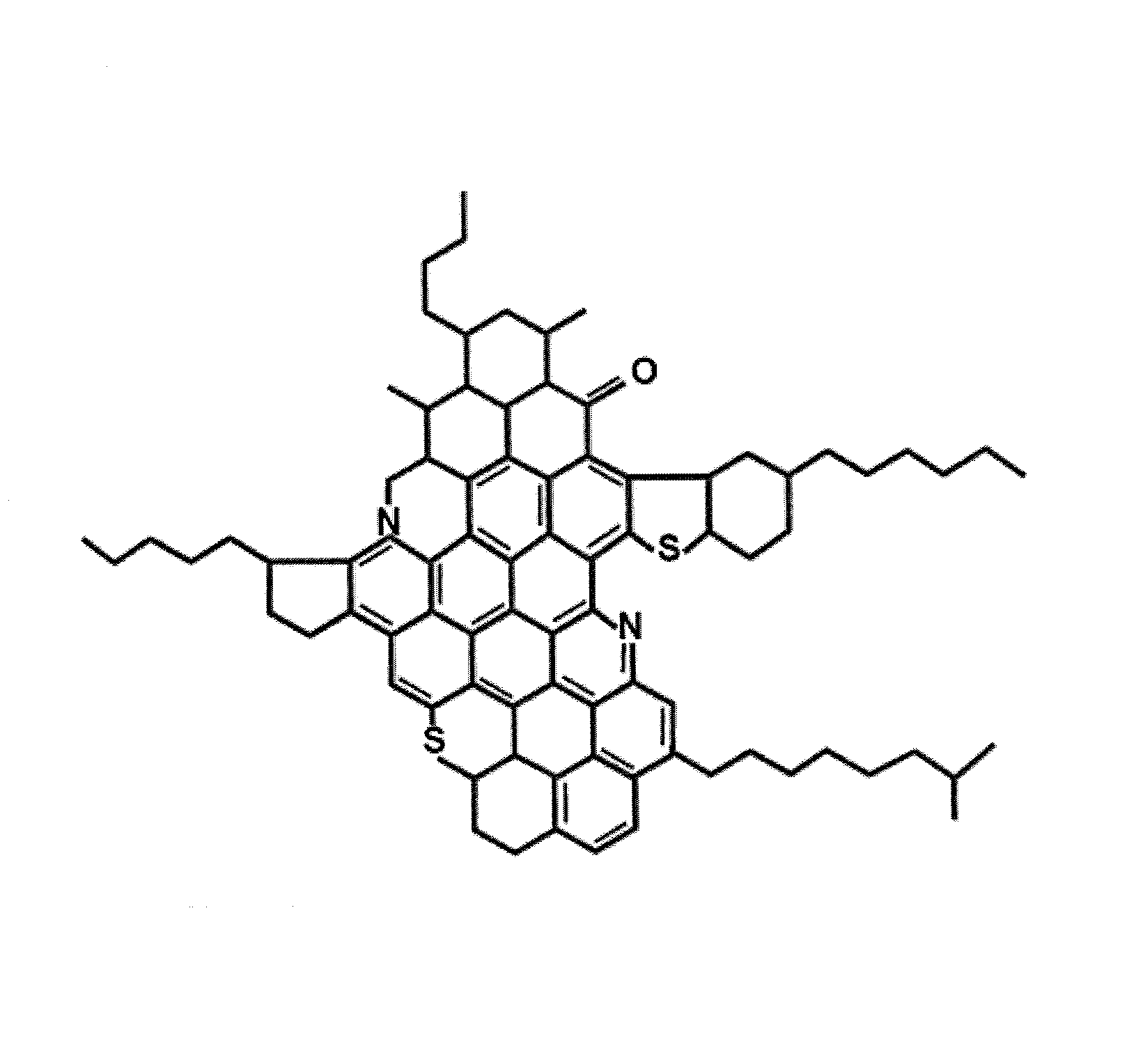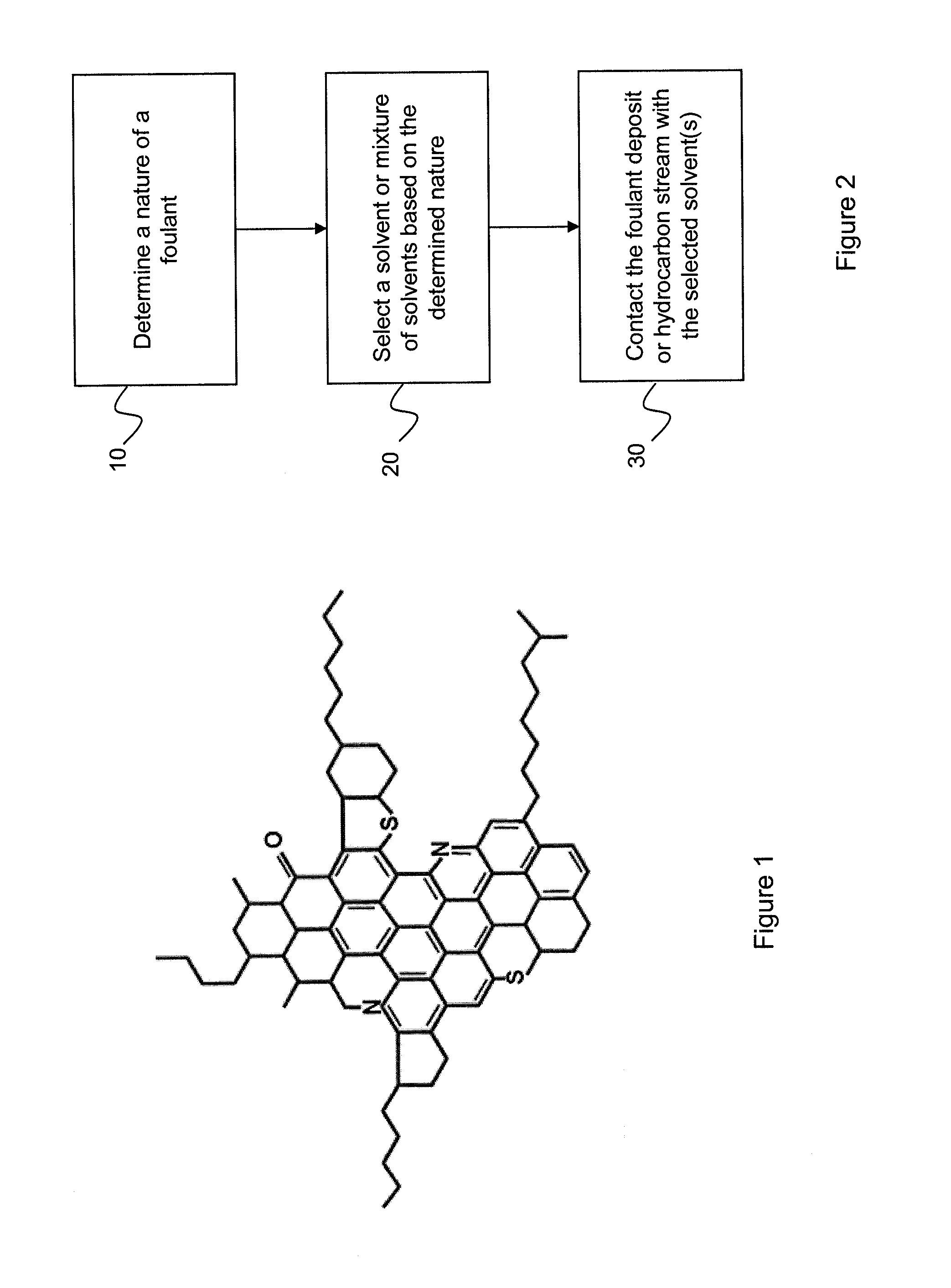Deposit mitigation in gasoline fractionation, quench water system and product recovery section
a technology of deposit mitigation and gasoline fractionation, which is applied in the direction of hydrocarbon oil treatment products, cleaning using liquids, instruments, etc., can solve the problems of affecting equipment function, presenting numerous problems for refiners, and poor flow regime, so as to reduce the rate of deposit formation, and mitigate the effect of deposit formation
- Summary
- Abstract
- Description
- Claims
- Application Information
AI Technical Summary
Benefits of technology
Problems solved by technology
Method used
Image
Examples
Embodiment Construction
[0022]Embodiments disclosed herein relate to the processing of hydrocarbon streams containing foulants, such as asphaltenes and other asphaltene-like compounds. Asphaltenes, in general, refers to a class of compounds, and not a pure component. They consist of tens of thousands of chemical species and the composition is not well defined. In addition, they appear to interact with each other and the other oil constituents in a complex manner. The multiple hypothetical structures proposed for asphaltenes lead to different, inconsistent modeling approaches. One proposed structure for an asphaltene is illustrated in FIG. 1.
[0023]Hydrocarbon streams containing foulants may come from a variety of sources, including well-head condensates, crude oil, heavy crude oil, synthetic crudes, crude petroleum oils, atmospheric or vacuum residua, topped crudes, reduced crudes or fractions thereof. The sources can also contain other suspended matter such as added catalysts or contact materials. In other...
PUM
| Property | Measurement | Unit |
|---|---|---|
| thermodynamic model | aaaaa | aaaaa |
| concentration | aaaaa | aaaaa |
| thermodynamic property | aaaaa | aaaaa |
Abstract
Description
Claims
Application Information
 Login to View More
Login to View More - R&D
- Intellectual Property
- Life Sciences
- Materials
- Tech Scout
- Unparalleled Data Quality
- Higher Quality Content
- 60% Fewer Hallucinations
Browse by: Latest US Patents, China's latest patents, Technical Efficacy Thesaurus, Application Domain, Technology Topic, Popular Technical Reports.
© 2025 PatSnap. All rights reserved.Legal|Privacy policy|Modern Slavery Act Transparency Statement|Sitemap|About US| Contact US: help@patsnap.com


